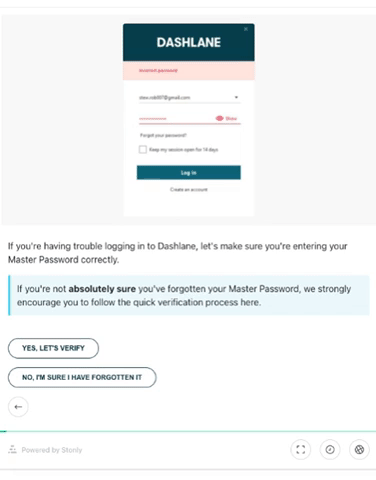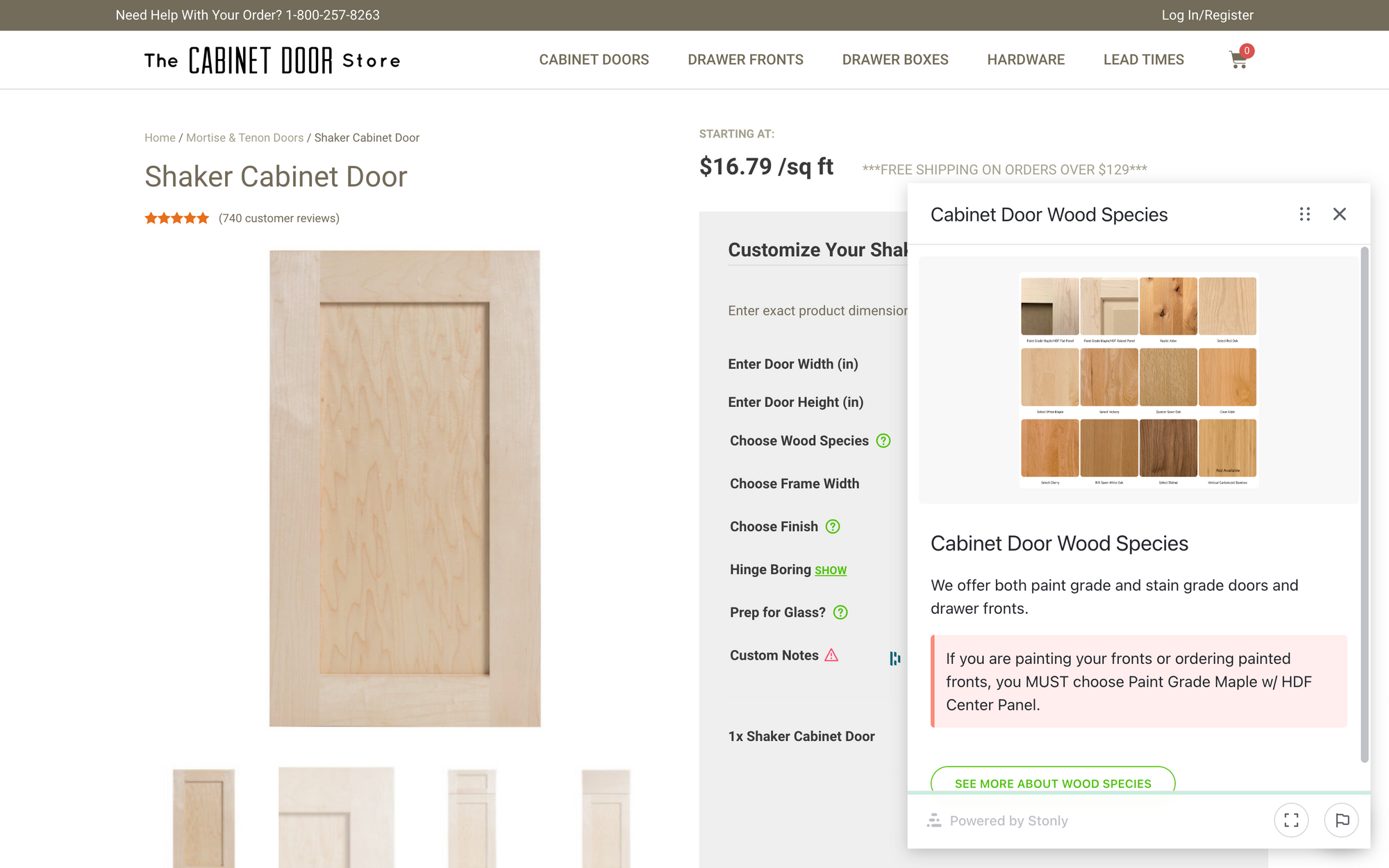Over the years, we’ve helped hundreds of companies deflect tickets, grow their support infrastructure, and level-up their self-serve systems.
In that time, we’ve identified some quick wins that pop up again and again. We’ve distilled them into this blog post in the hopes that you can implement them for your company and see an impact, fast.
The steps contained in this article are fast, easy, and actionable, so you can make significant improvements without having to over-invest time or capital.
By implementing one or two of these tactics, you can improve your self-serve support ratings and customer satisfaction in the next week or two.
No time to DIY your self-serve? Our CX experts can help you set up a tailored plan. Schedule a call.
Quick Win #1: Focus On One Key Issue First
Try this if: you want to make a big impact on your ticket volume or you have issues your support team is tired of answering.
We’ve written about this before. We have a 3-step system to deflect tickets and increase self-serve support use among customers. In order to keep this a “quick” win, take this approach on one important topic, and within a week you’ll start to see results.
Here’s a quick breakdown:
- Identify your highest ticket volume issue that customers could self-serve. This should be easy - off the top of your head, what are the top 2-3 questions your team receives most frequently? Think of topics your team wishes more people would solve on their own.
- Create powerful help content. If you already have articles in your knowledge base dedicated to these questions, and you’re still getting a significant amount of tickets, your help content is either too difficult to find or too difficult to use. To solve this problem, you need to create content that really guides customers to the right answer for them. To do this, we recommend you make a piece of easy-to-follow interactive content, and build out paths for different situations.
- Get your content in front of your customers. If customers can't easily access your help content, when and where they need help, they won't use it. You need to get it in front of customers before they attempt to contact your team. This can be accomplished by carefully considering where you place your help content and how you make using it the obvious option.
Quick Win #2: Replace Your Most Visited Help Center Article with a Step-By-Step Guide
Try this if: You have a few articles in your knowledge base with a lot of volume.
The reason so many customers bounce from a knowledge base article to your support queue is because long, static articles are overwhelming. Modern customers don’t want to read and figure out what applies to their situation - they want to be guided to the right resolution for them.
Identify one article in your knowledge base that generates significant traffic but isn’t working hard enough for your team and add an interactive, step-by-step guide to it.
When you break a set of instructions down into steps (and only display one step at a time), you allow customers to focus on one thing at a time, preventing information overload.
You can also include different paths for different customers, so they get just the information that is relevant given their situation.
Often, two people trying to solve the same problem require different solutions, based on their circumstances. An interactive guide that let’s a customer select the path that fits their situation, dramatically improving their likelihood of self-serve success.
You can build an interactive guide with Stonly, and place it directly in your current help center, without having to update the content you already have there. This is exactly what Dashlane did.
Dashlane (a password manager) found that a lot of their tickets were coming from customers who had forgotten their master password. The steps to recover these passwords can vary based on the customer's type of account and level of access. Dashlane decided to introduce interactive guides to their help center.
Now, when customers lose their master password and seek help, they are prompted to make a series of choices. What type of device are they using? Are they on a team or solo plan? Do they have an emergency contact setup?

From there, they are provided with step-by-step instructions for recovery that are applicable to their individual situation. This prevents confusion and enables them to find the information they need on their own, and it reduced Dashlane’s ticket volume by more than 25%.
Quick Win #3: Create a Contact Form that Works Harder
Try this if: You’re using a basic contact form right now to create most of your support tickets.
Contact forms are an often overlooked piece of customer interaction, but they’re a critical part of the support experience - most people who contact your support team interact with a contact form on their path to creating a ticket. So how can you make them work harder for you?
When a customer finds your contact form, they are looking for an answer to a question and have given up trying to find it themselves. The best way to help them is to use your contact form to answer customers’ most common questions.
In your contact form, ask your customers what they need help with. Then, based on the category they choose, offer immediate answers to common issues on that topic.

Stonly allows you to create smart forms without needing a developer. These forms support conditional logic and can allow your customers to pre-provide their information. Because of this, customers can find answers before they submit a question to your team. And in instances where that isn’t plausible, your team will have enough information about the individual customer to answer questions faster and tailor your response to their needs - without having to ask them repetitive questions.
Quick Win #4: Improve Tooltips for Important Issues
Try this if: you can identify a few places in-app or on your site where customers have common questions.
Most tooltips aren’t great at answering important questions. By design, they’re small and unobtrusive, and they only offer small bits of information at a time. The benefit of tooltips is that they appear exactly when and where your customers need them; on the negative side, they often don’t offer enough information to actually answer questions.
If you take a moment, you can probably identify at least a few tooltips on your site that don’t give customers the answers they really need. To increase the effectiveness of these tooltips, add interactive guides that launch with a click and immediately provide your customers with a more helpful answer.
The Cabinet Door Store does this very effectively. They know that, when on their product detail pages, potential customers have a few consistent questions. They replaced basic, single-sentence tooltips with interactive guides that really answer the questions that customers have. This keeps customers on the path to conversion, and doesn’t take up any extra real estate on their site.

Improve Your Self-Serve Support By Next Week
These four tactics can help you deliver better self-serve support quickly and easily. As a recap, here are the steps you can take to improve your support system by next week:
- Focus on one key issue first. Use our targeted approach to identify high volume issues and start deflecting tickets.
- Replace your most visited help center articles with step-by-step guides. Help your customers avoid frustration by delivering instructions one step at a time, making it easier to focus on the task at hand.
- Create a contact form that works harder for your company. Everyone who interacts with your support team will visit your contact form - use it to provide answers to common questions before customers file a ticket.
- Improve tooltips for important issues. Make your tooltips more effective by launching interactive guides that answer customers’ questions thoroughly.
At Stonly, our goal is to help you provide better service to your customers. We've helped hundreds of companies implement these steps and build incredibly effective self-service support. If you’re looking to do the same thing, schedule a demo with our team today.
Related post: How to Build a Help Center? The Complete Step-by-Step Guide

